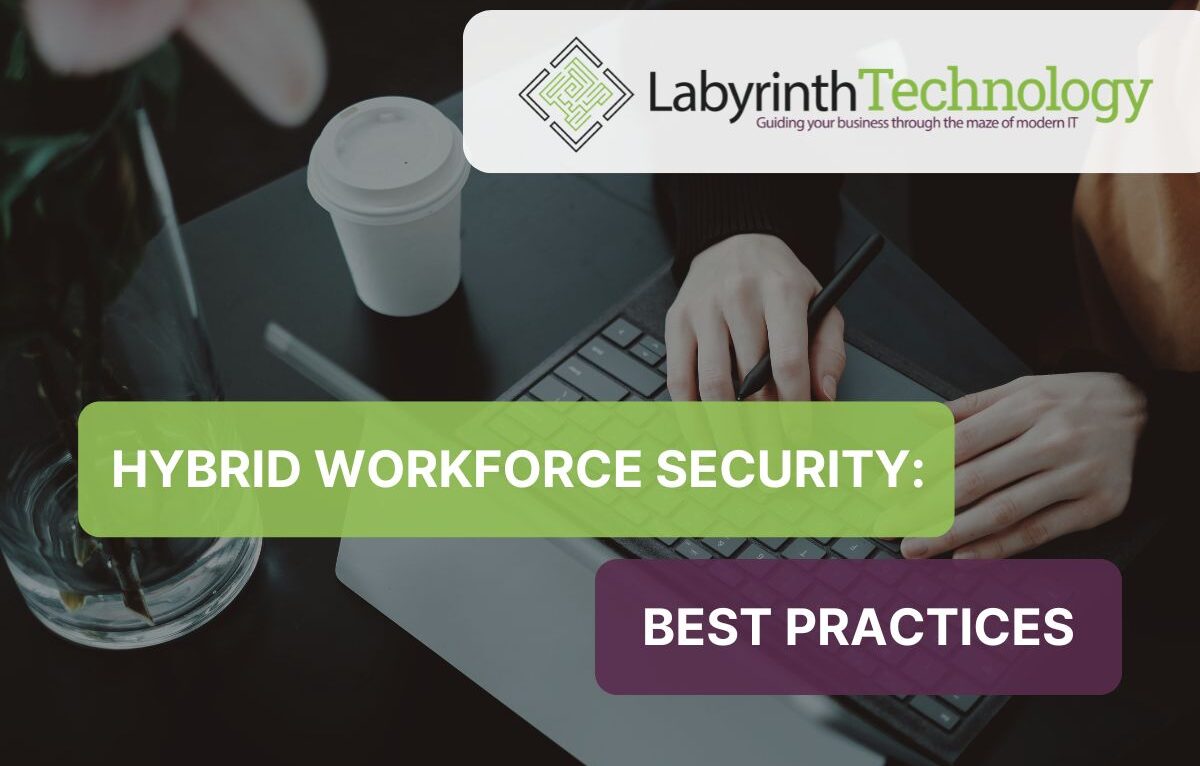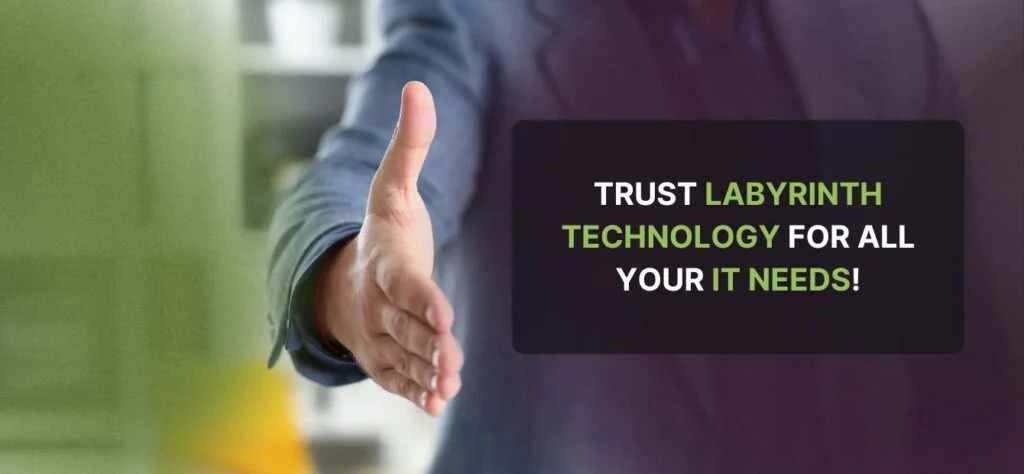
In recent years the hybrid workforce has changed the way businesses operate. A hybrid workforce combines employees working both remotely and in the office, providing flexibility that enhances productivity and employee satisfaction. The COVID-19 pandemic accelerated this trend and many companies have continued with this model because of the benefits. However, the hybrid workforce also brings unique challenges, especially when it comes to cyber security.
The popularity of the hybrid workforce is largely driven by its ability to offer flexibility. Employees appreciate the autonomy to work from different locations, whether from home or the office, depending on their needs. This flexibility improves work-life balance and can lead to increased job satisfaction, which often translates to better productivity. For businesses, the hybrid model reduces the overhead costs associated with maintaining fully staffed physical offices and provides a broader talent pool, allowing companies to hire the best talent regardless of location.
Moreover, the hybrid model also enables business continuity during times of crisis, such as during global disruptions like the pandemic. This adaptability is crucial in today’s fast-paced business environment, allowing organisations to maintain productivity even in unforeseen circumstances.
However, while the hybrid workforce offers significant advantages, it also poses potential risks, especially in terms of cyber security. Securing data and networks across various locations becomes more complex when employees are dispersed. This highlights the importance of implementing effective cyber security measures to protect against growing threats.
With employees working from multiple locations, businesses need to prioritise cyber security more than ever. Remote workers often access company networks from home, on public Wi-Fi, or on personal devices. Each of these scenarios presents security risks that must be addressed to ensure sensitive data is protected from potential cyberattacks.
One of the primary threats in a hybrid work environment is phishing attacks. Cybercriminals often target remote workers through emails or messages that appear legitimate, attempting to steal personal or business information. When employees are working outside of a controlled office environment, they may be more vulnerable to such attacks. Additionally, the use of personal devices for work increases the likelihood of malware or unauthorised access to company data.
Another risk is the use of unsecured networks, especially public Wi-Fi. Without adequate VPNs, employees may inadvertently expose their business data to hackers. The hybrid workforce requires companies to strengthen their security protocols to ensure that data can be safely accessed from anywhere. This means adopting best practices for password management, multi-factor authentication, and data encryption.
As businesses increasingly adopt hybrid and remote work models, security teams face new challenges in ensuring secure access to company data. Hybrid workers, who split their time between the office and remote work, must have secure and seamless access to digital tools without compromising security. This includes securing remote connections and providing safeguards for employees using their own devices.
To enable secure access, business leaders and IT teams must adopt a unified approach to protect against the expanded attack surfaces that hybrid work introduces. Using SASE solutions and artificial intelligence, businesses can better safeguard user experiences while ensuring compliance with latest technology standards. A secure hybrid workforce not only keeps data safe but also boosts employee engagement by enabling flexible work environments without sacrificing security.
With the hybrid work model becoming the norm, managing security is more complex as hybrid employees access company data from diverse locations like home, coworking spaces, or coffee shops. Businesses must adopt the right technology to secure remote connections and ensure secure access to corporate resources. This is where zero trust network access comes in, helping organisations to reduce security breaches by ensuring that all users, whether in the corporate office or working remotely, are properly authenticated. Cyber security training and security policies are essential to protect against human error and emerging threats in this flexible environment.
Securing a hybrid workforce means multi-layered security. Here are some best practices for both remote and in-office employees to work securely:
Strong authentication like multi-factor authentication (MFA) is key to only allowing authorised people to access business systems. MFA adds an extra layer of security by requiring users to provide two or more verification factors—like a password and a code sent to their mobile.
A VPN encrypts internet traffic and secures the connection between remote employees and the company’s network when accessing the internet via public Wi-Fi. Make sure all remote workers use a reliable VPN to protect sensitive data from being intercepted by hackers.
Employee training is one of the best ways to reduce the risk of cyber attacks. Regular security training can educate employees on how to spot phishing emails, avoid suspicious links and manage their passwords securely. So employees are ready to respond to threats.
Make sure both company provided and personal devices used for work are secure. Endpoint security solutions can monitor and protect devices from malware, unauthorised access and other vulnerabilities. And make employees use secure home networks—like those with strong passwords and firewalls—to protect the business from network based attacks.
Businesses should encrypt data to protect sensitive information so even if data is intercepted it can’t be read by unauthorised people. Regular data backups are also crucial so businesses can recover quickly in case of data breach or hardware failure.
A Zero Trust security model means no one—inside or outside the organisation—can access sensitive systems without verification. In a hybrid workforce this reduces the risk of unauthorised access to company systems.
Endpoint Detection and Response (EDR) tools monitor endpoints like laptops and mobile devices in real-time. These tools can detect and respond to security threats quickly to prevent a cyber attack on remote workers.
Managing the security of a hybrid workforce can be a big task especially for small and medium sized businesses that may not have the internal resources to do it. That’s where managed service providers like Labyrinth Technology come in. MSPs offer full cyber security solutions so businesses can work securely in a hybrid environment.
At Labyrinth Technology we provide tailored IT solutions for businesses with hybrid workforces. We take a proactive approach to cyber security, monitoring your network and systems 24/7 to identify and resolve potential issues before they become threats. Our team of experts work with your business to develop security strategies that meet your specific needs so your remote and in-office employees have the tools to work securely.

As businesses adopt the hybrid workforce model the need for cyber security has never been greater. With employees working from multiple locations the risk of cyber attacks increases so it’s critical to have robust security in place. By following best practices like multi-factor authentication, securing devices and networks and regular security training businesses can protect themselves from threats.
At Labyrinth Technology we have the expertise and solutions to secure your hybrid workforce. With our full IT services and proactive security approach you can be sure your business is protected. We understand the challenges of managing a hybrid workforce and we help businesses in all industries secure their networks, systems and data.
We go beyond IT support. We offer full cyber security solutions including network monitoring, endpoint protection and employee training to help your business be secure. Our proactive approach means we’re always looking out for potential vulnerabilities so your business is always one step ahead of cyber threats.
In addition to our cyber security expertise we’re known for our transparency and cost effective solutions. When you partner with Labyrinth Technology you get a trusted partner who will help your business succeed. Whether you need ongoing support for your IT infrastructure or help with a specific security issue we’re here for you.
Contact us today to learn more about how we can help you safeguard your business in a hybrid work environment.
Empowering London Businesses with Efficient IT Solutions to Save Time and Stay Ahead of the Competition.